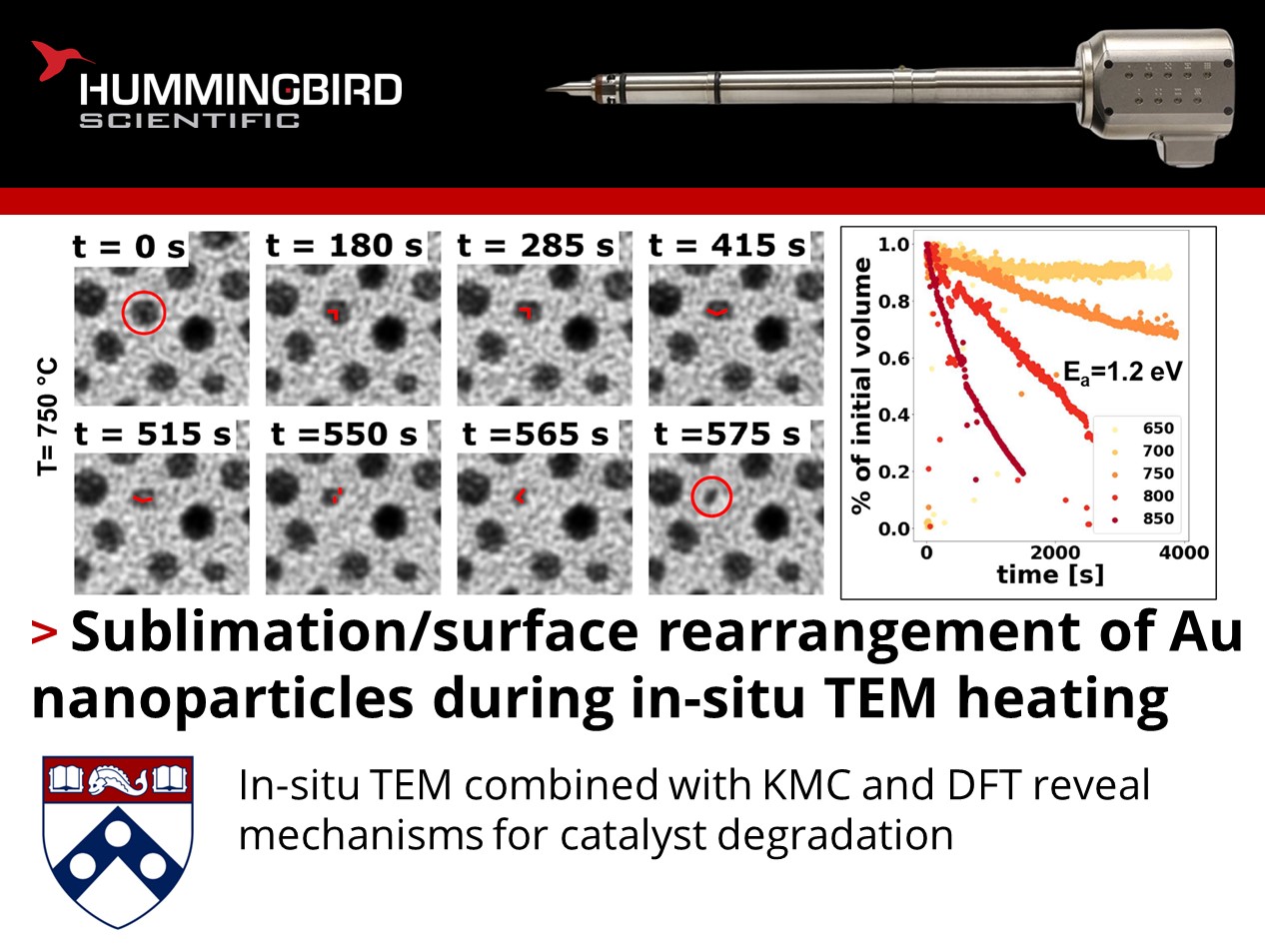Curious about how catalysts degrade at elevated temperatures?
James Horwath, Eric Stach, and their colleagues at the University of Pennsylvania published the results of Au nanoparticle heating experiments using their Hummingbird Scientific in-situ MEMS heating + biasing TEM holder, investigating particle sublimation and surface rearrangement. The experiment combined kinetic Monte Carlo (KMC) simulations and density functional theory (DFT) calculations with experimental results to identify the mechanisms which govern nanoparticle surface evolution.

a) Time lapse of Au nanoparticle sublimating at 750 °C. Faceted notches (highlighted with red lines) which form at the surface of the particle trigger fast sublimation. b) Size (R) vs time profiles for all tracked particles. c) Sublimation rates and d) Arrhenius form and extracted activation barrier. Copyright © 2023 American Chemical Society
The morphological changes of hundreds of 5nm gold nanoparticles were tracked at temperatures of 650-850°C. The temperature stability of the Hummingbird holder allowed the team to directly correlate nanoparticle evolution via diffusion, sublimation and roughening. Above ~750 °C, a surface roughening transition occurs and gold adatoms formed predominantly on low-coordination terraces sublimate rapidly. This two-step adatom formation-and-desorption process explains the sudden increase in sublimation rates at higher temperatures. Improved understanding of this high-temperature degradation of nanoparticles will inform future improvements to catalyst lifetime and selectivity.
Reference: James P. Horwath, Colin Lehman-Chong, Aleksandra Vojvodic, and Eric A. Stach, ACS Nano 17 (9) 8098–8107 (2023) DOI: 10.1021/acsnano.2c10523
Full paper Copyright © 2023 American Chemical Society
View All News

